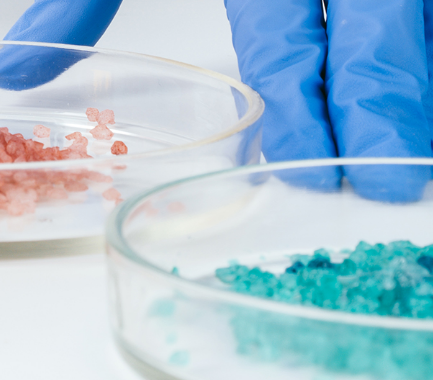Your contact
PENPET-Team - Hamburg

Tim Meister
Sales
Tel. +49 (0) 40 - 675 7 99 40
sales@penpet.de
Get in touch with us.
Acrylic acid
Acrylic acid is a substance from the group of unsaturated carboxylic acids, which the chemical industry mainly uses as a starting material for the production of polymer plastics such as polyacrylates. The compound is also used as a component of adhesives, paints, coatings and polishes. On an industrial scale, acrylic acid is obtained primarily by the two-stage oxidation of propene. Alternative methods of manufacture include the thermolysis of propioactone and the carbonylation of acetylene. In addition, cost-effective ways of producing it from propane gas are already being tested.
At PENPET you can easily order the required amount of acrylic acid. We look forward to receiving your inquiry for an individual offer. Delivered as a liquid in tank containers, IBCs and drums.
CAS no. 79-10-7
EINECS no. 201-177-9
Molecular formula: C3H4O2
Synonyms: Propenoic acid, prop-2-enoic acid, vinyl carboxylic acid, ethylene carboxylic acid, acrylic acid
Areas of application: Base material for the manufacture of polymeric plastics, coatings, adhesives, paints, polishes and elastomers
More Information
Acrylic acid is the simplest unsaturated carboxylic acid. The substance consists of an unsaturated vinyl group directly connected to the carboxy group. The compound therefore has two reactive centers with a small molecular size. While the unsaturated bond of the vinyl group is prone to addition reactions, the carboxy group typically combines with alcoholic compounds in an esterification reaction. Both processes can be the starting point of polymerizations. Salts and esters of acrylic acid are referred to as acrylates.
At room temperature, acrylic acid is a colorless liquid with a pungent vinegar-like odor. It is only slightly volatile. The compound is completely miscible in water, diethyl ether, chloroform and ethanol. Acrylic acid is readily soluble in other organic solvents such as benzene, acetone and carbon tetrachloride. The aqueous solution of the compound is strongly acidic.
Acrylic acid is chemically unstable but can be safely stored under recommended conditions. Particular attention must be paid to preventing spontaneous polymerization under the influence of oxygen, sunlight or heat. Violent reactions occur in contact with strong bases and amines. Acrylic acid should also be kept away from strong oxidizing agents, acids and peroxides. The compound is highly corrosive and will attack metals.
Acrylic acid has a strong tendency to polymerize. Not only must the risk of uncontrolled and undesired reactions be taken into account, but also the possibility of unnoticed clogging and damage to system components due to acrylic acid that polymerizes spontaneously and solidifies. Stabilizers such as hydroquinone monomethyl ether are added to the compound for stable storage and handling. It is essential to avoid cooling acrylic acid to temperatures below the melting point. This would form pure crystals of the substance, which would no longer contain any stabilizer when they thawed out again and would polymerize in explosive reactions. Spontaneous polymerization of acrylic acid releases large amounts of heat and can rupture sealed containers.
The compound is flammable. There is a particular risk of explosion from the vapors of the substance, which form highly flammable mixtures with the ambient air. Due to its higher density, the acrylic acid vapors are heavier than air and collect on the ground. They can therefore spread unnoticed and even be ignited by distant ignition sources. Acrylic acid should therefore be kept away from open flames, but also from welding sparks, hot surfaces and electrostatic discharges. Toxic and harmful gases are formed when acrylic acid is heated and burned.
Increased caution is required when handling acrylic acid. The compound has a caustic effect and is irritating to the skin even in small amounts. Even brief contact can cause burns and chemical burns to the skin and eyes. Irreversible eye damage and loss of vision are possible. Affected parts of the body should be rinsed immediately and copiously with water. Then consult a dermatologist and ophthalmologist immediately. Inhaling the compound causes irritation of the respiratory tract and mucous membranes, shortness of breath, reddening of the eyes and increased tearing. With heavy exposure, pulmonary edema may develop.
Ingestion of acrylic acid can cause indigestion, diarrhea, shock, unconsciousness, and serious long-term damage to the esophagus and digestive tract. After accidental ingestion of the substance, sufficient water should be drunk and medical assistance should be sought. Since symptoms of poisoning may only appear after some time, medical supervision is required for up to 48 hours after an incident.
Acrylic acid is very toxic to aquatic organisms and is classified as a clearly water-polluting substance. It is essential to prevent the connection from penetrating into the ground, water or sewage system. Even the entry of small amounts must be reported to the responsible authorities. Official regulations apply to the transport of acrylic acid.
